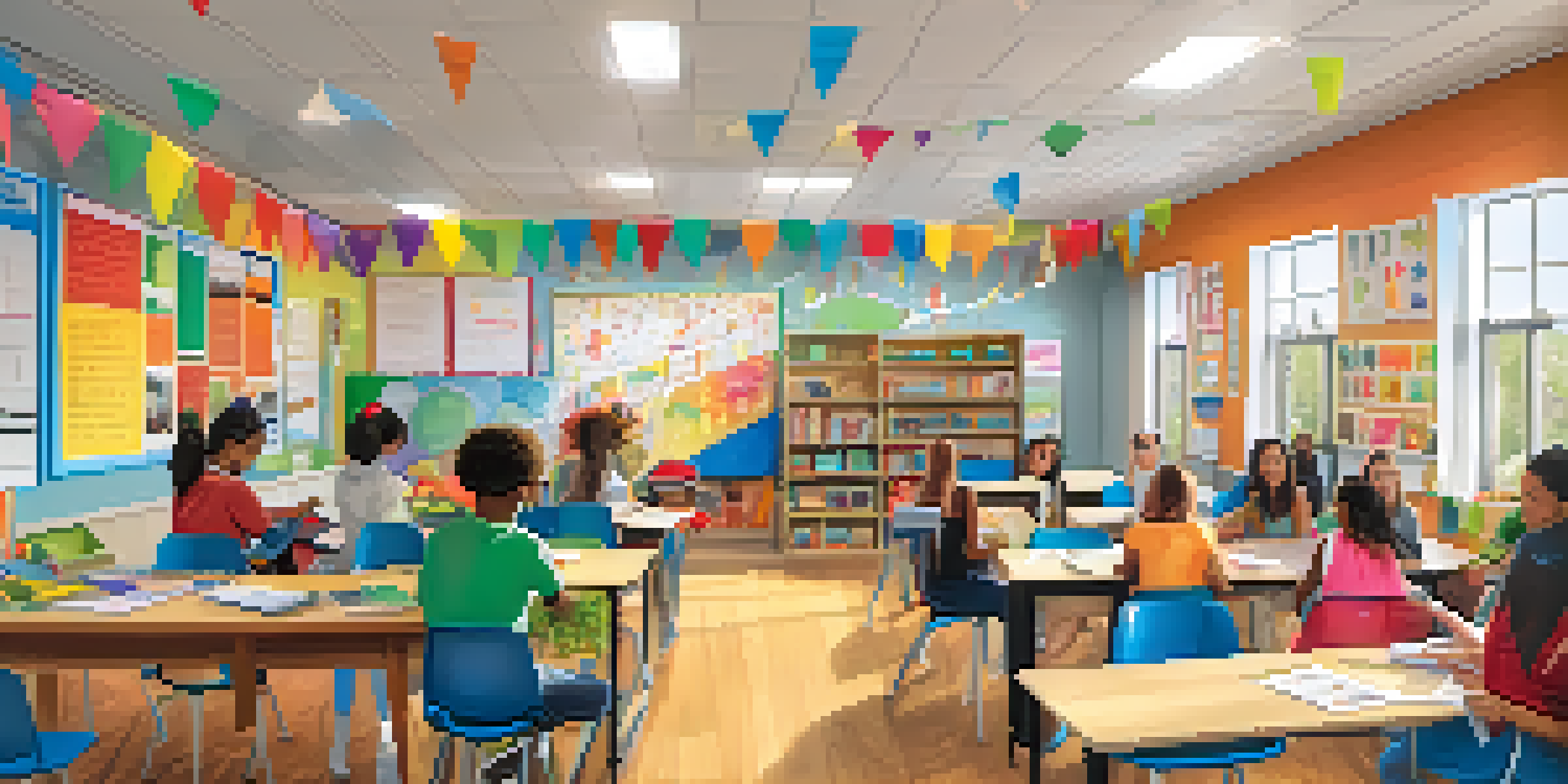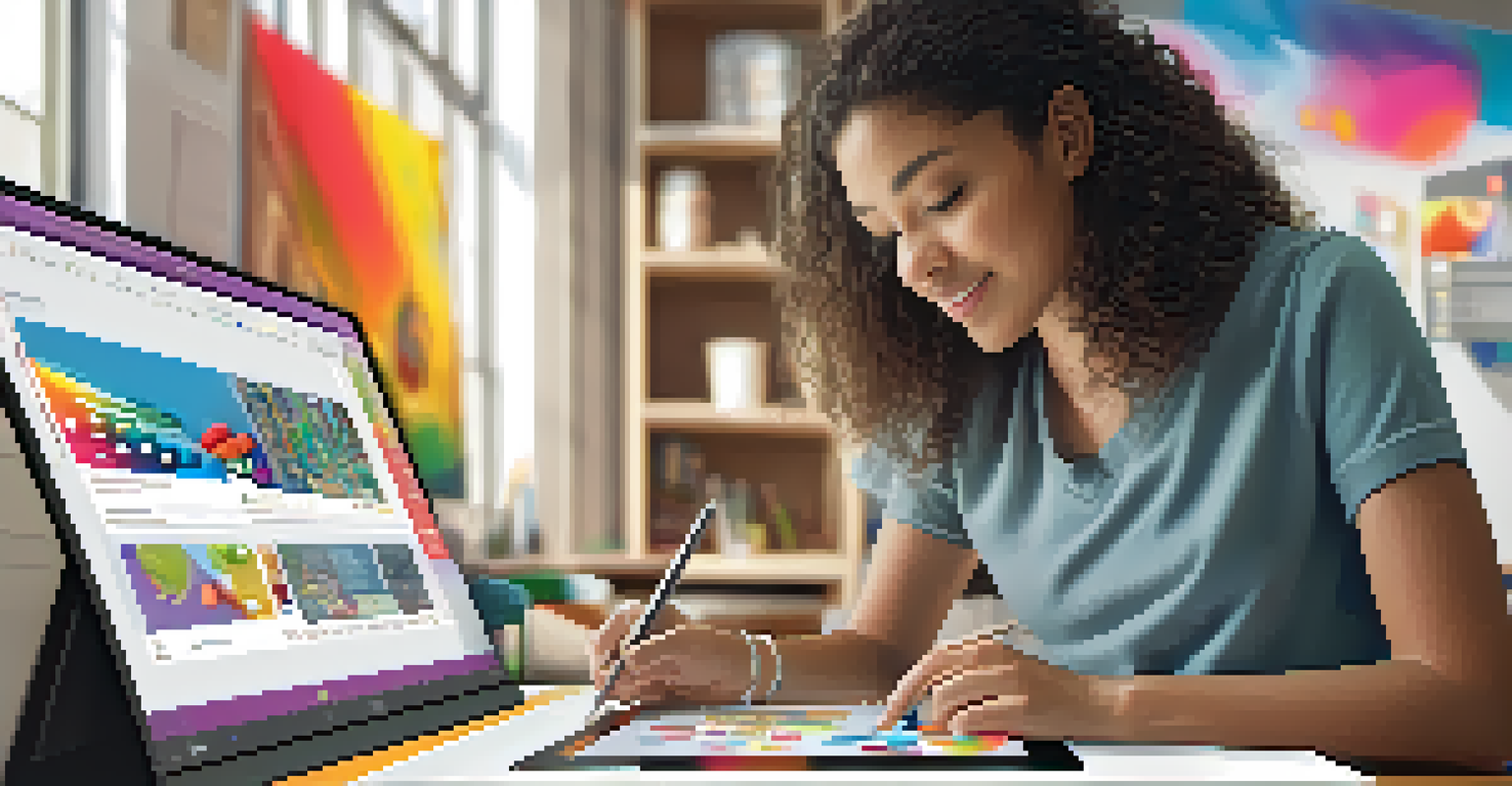Creating Pathways That Reflect Student Interests

Understanding Student Interests for Effective Pathways
To create pathways that truly resonate with students, we must first understand their interests. This can involve surveys, interviews, or even casual conversations that probe what excites them. When students feel their voices are heard, they are more likely to engage in their education.
Education is not the filling of a pail, but the lighting of a fire.
Consider a student who loves coding but struggles to see its relevance in traditional curricula. By identifying such interests, educators can design programs that link coding with real-world applications, fostering a deeper connection to learning.
Ultimately, tapping into student interests not only boosts engagement but also encourages a culture of enthusiasm around education. When students see a direct link between their passions and their learning, it empowers them to take ownership of their educational journey.
The Role of Teachers in Guiding Interests
Teachers are critical in helping students explore their interests and potential pathways. They can facilitate discussions that unveil hidden talents and passions, serving as mentors who guide students through their educational choices. A supportive teacher can make all the difference in a student's perception of their future.

For example, a high school science teacher might notice a student's fascination with environmental issues. By encouraging them to join related clubs or projects, the teacher helps the student develop their interest more fully. This personalized attention can lead to a clearer pathway toward careers in environmental science or policy.
Understanding Student Interests
Identifying and embracing student interests fosters engagement and ownership in their learning journey.
Moreover, teachers can collaborate with students to create tailored learning experiences that align with these interests, making education feel more relevant and exciting. This kind of mentorship fosters a lifelong love of learning and opens doors to various career paths.
Incorporating Real-World Experiences
Real-world experiences are invaluable in helping students connect their interests with practical applications. Internships, volunteer opportunities, and field trips can provide insights into various careers and industries. By stepping outside the classroom, students can see how their interests can translate into real-world skills and job opportunities.
Tell me and I forget. Teach me and I remember. Involve me and I learn.
For example, a student interested in journalism might benefit from an internship at a local newspaper. This experience not only hones their writing skills but also offers a glimpse into the day-to-day realities of a journalist's life. Such exposure can solidify their career choice and inspire them to pursue further education in the field.
Ultimately, integrating real-world experiences into educational pathways enriches the learning process. These experiences help students visualize their futures, making their educational journey more relevant and engaging.
Creating Flexible Learning Environments
Flexibility in learning environments is essential for catering to diverse student interests. Traditional classroom settings often stifle creativity and exploration, limiting students' ability to pursue their passions. By creating dynamic spaces that promote collaboration and independent learning, educators can nurture student interests more effectively.
For instance, a classroom designed for project-based learning allows students to work on interests at their own pace while collaborating with peers. This setup encourages creativity and helps students take charge of their learning process, ultimately leading to deeper engagement.
Teachers as Mentors
Teachers play a crucial role in guiding students to explore their passions and potential career pathways.
Moreover, flexible learning environments can adapt to various learning styles, ensuring that all students find a pathway that resonates with them. This inclusivity contributes to a richer educational experience and empowers students to thrive.
Engaging Parents and the Community
Involving parents and the community in the educational journey can be a game-changer. Parents often have insights into their children's interests and can support their exploration outside school walls. By fostering partnerships with families, schools can create a more holistic approach to student development.
Community organizations can also play a crucial role by offering resources, mentorship, and real-world experiences aligned with students' interests. For example, a local art gallery might collaborate with schools to provide workshops, allowing students to explore their artistic passions in a supportive environment.
These partnerships create a network of support that extends beyond the classroom, enriching the educational pathways students can explore. When parents and the community are engaged, it enhances the overall learning experience and encourages students to pursue their interests more vigorously.
Utilizing Technology to Personalize Pathways
In our increasingly digital world, technology offers innovative ways to personalize educational pathways. Learning platforms can be tailored to reflect students' interests and learning styles, providing customized resources and recommendations. This kind of personalization ensures that each student receives an education that aligns with their passions.
For example, a student interested in graphic design can access online courses, tutorials, and forums that cater specifically to that field. This not only keeps them engaged but also allows them to learn at their own pace and delve deeper into their interest.
Importance of Real-World Experience
Real-world experiences connect students' interests with practical applications, enriching their educational journey.
Furthermore, technology can facilitate connections with industry professionals through virtual mentorship programs. These interactions can inspire students and provide valuable insights into potential career paths, making technology a powerful ally in shaping educational experiences.
Assessing and Adapting Pathways Regularly
Creating effective pathways is not a one-time task; it requires ongoing assessment and adaptation. Regularly soliciting feedback from students about their interests and experiences helps educators understand what works and what doesn't. This iterative process ensures that educational pathways remain relevant and engaging.
For instance, if a student expresses a newfound interest in robotics, schools can adapt their programs to incorporate more hands-on robotics projects. This responsiveness not only validates students' changing interests but also fosters a culture of continuous learning.

By regularly evaluating and refining pathways, educators can ensure that all students feel valued and supported in their educational journey. This adaptability is key to keeping students engaged and motivated as they explore their interests.